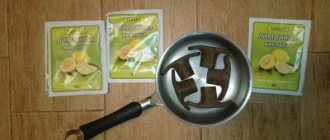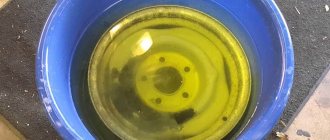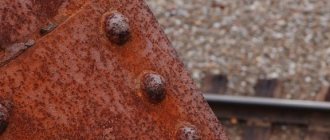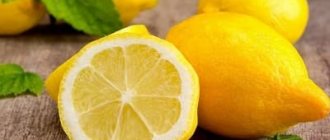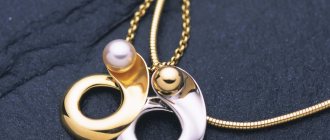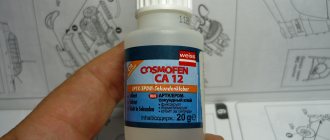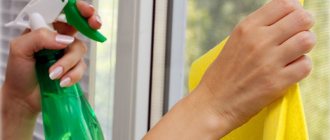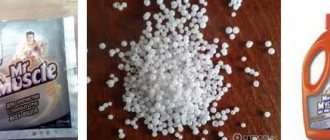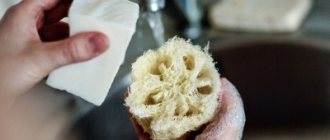The appearance of rust on metal products is so common that this red-brown coating is already taken almost for granted. Over time, under the influence of moisture and air, various surfaces, workpieces, tools and parts lose their appearance. If no steps are taken, the metal will quickly begin to deteriorate, so traces of corrosion must be eliminated immediately. However, first you need to find out how and with what you can remove rust from metal at home. There are quite a lot of life-saving remedies to get rid of dangerous plaque. In this case, they use products that are familiar to everyone, but in an unusual role for them, as well as special anti-rust preparations. But the effectiveness of both depends largely on the degree of damage to parts, pipes, tools and other metal objects.
Causes of corrosion
The prerequisite for the formation of brown spots and destruction of metal can be not only contact with moisture. Sometimes the future hearth is hidden under a layer of paintwork, waiting for a chance to show itself. Storing metal and products made from it in a damp, poorly ventilated environment also results in the appearance of pockets of corrosion.
And further neglect of cleaning and protection will lead to the development of small areas into vast areas, damaging large areas. For thin metal (car body), such inaction will end in failure - costly repairs.
Where does rust in water come from?
Source remont-book.com
I hope you understand that rust gets on the walls of the toilet along with the water you regularly flush the plumbing fixture with. But here another question may arise: how does this result of metal oxidation get into the water? In fact, everything is simple: main pipelines are rarely made of galvanized metals, and an ordinary pipe, due to the combination of exposure to water and oxygen, becomes corroded from the inside. It is this that is washed away by the water that is distributed among the apartments. Another reason for rust getting into the water you flush the toilet with can be rusty mounting bolts on the flush tank of the plumbing fixture.
Cleaning methods
There are several working methods for getting rid of metal corrosion. Experienced metalworkers successfully use them individually or in combination, depending on the complexity of the situation. These include the following methods:
- mechanical cleaning;
- chemistry;
- alternative (available means).
Which one to choose is up to the owner of the problem to decide, taking into account the available resources, including reagents, time, and the scale of the damage.
Mechanical
One of the most practiced ways to combat rust. It consists of slowly but surely removing corrosion products from the surface of steel or alloys. Hard brushes, special attachments for power tools, and abrasives are used. At the end of the procedure, dust and dirt are removed, the freed metal is cleaned and dried.
See also
Rules and methods for quickly removing dust after sanding walls
Chemical exposure
It consists of treating a rusty part or surface with concentrated acids. Alkalies are used less often.
An elementary chemical reaction occurs: under the influence of the reagent, iron oxides form a salt.
The process is not fast, and it is slowed down by the use of a weakly concentrated composition. But as a result of processing, loose, exfoliated fragments dissolve into pure metal. All that remains is to remove and wash off the remaining reaction with water.
The use of folk remedies
What to do, having experience, knowledge, and the ability to use industrial methods to solve the problem, is already clear. But what to do if all this is missing? You will have to use alternative, folk methods.
Use in everyday life
Although oxalic acid has not gained such popularity in home use as, for example, acetic or citric acid, it is effectively used in some cases:
- water softening;
- as an insecticide in beekeeping;
- fabric dyeing;
- bleaching and disinfection of surfaces.
READ ALSO: WHERE TO ORDER CLEANING OF INDUSTRIAL PREMISES
Wood bleaching
When renovating or building a house, it is recommended to bleach wood surfaces before painting. After this, the paint spreads more evenly onto the wood. Prepare a 10% oxalic acid solution. Apply to a wooden surface that must first be treated with sodium hydrosulfite. After 5 minutes, rinse off the product with clean water. To speed up the process, you can prepare a mixture of 20 parts sulfuric acid, 15 parts oxalic acid, 10 parts hydrogen peroxide and 1000 parts water.
Application in beekeeping
The substance is effective against Varroa mites. This parasite causes the death of entire bee families.
A solution with oxalic acid can be prepared in 2 ways:
- Mix ½ glass of water, 100 g of sugar, 7 g of oxalic acid. Fill the inter-frame space with the solution (5 ml per hive).
- Prepare 20% sugar syrup. Add acid to it to get a concentration of 3.7%.
Carry out the treatment once. A solution of oxalic acid is not inferior in effectiveness to bivar and bipin against varroatosis.
Restoration of objects
Acid can effectively clean copper, zinc, iron surfaces, as well as their alloys. It is necessary to dilute 50 g of the substance in 1 liter of water. Place items that need cleaning into the warm solution for 20-30 minutes. Then keep it in a cold solution for several more days.
Learn about the pros and cons of microfiber floor mops.
Read about which coffee machine is best for your home and how to choose the right model at this address.
On the page https://poryadok-v-dome.com/rasteniya/uhod/abrikos-iz-kostochki.html, read the information on how to grow a seedling from an apricot seed and how to care for it.
Water softening
Do not water plants with hard water. The presence of calcium and magnesium salts negatively affects their development. To soften water for irrigation, you need to dissolve 10 g of oxalic acid in 1 liter of water. The salts will settle within 24 hours, and clean water can be poured into another container.
READ ALSO: Calamus root: pharmacological action and methods of use
How to remove with acid
Acid is the main component of many commercially prepared rust converters. Only there are some additives in the composition, but at home it is quite acceptable to get by with a clean solution. You will need:
- One of the acids (phosphoric, oxalic, citric).
- Water to dilute the solution to the required concentration.
The finished composition will cope with pitting and focal corrosion of metal without any problems.
Sorrel
The acid contained in the plant of the same name is sold in stores in a dry state, in the form of white crystals. To obtain a working solution, the powder must be diluted in water, avoiding contact with the skin, mucous membranes, and organs of vision. It is strongly recommended to use protective equipment when working with acids: goggles, overalls, gloves.
To prepare the working solution you will need 5 teaspoons of powder, as well as 250 milliliters of clean water. The crystals are stirred until completely dissolved, then immersed (or coated with a soft brush) on the workpiece. After about half an hour, depending on the degree of oxidation of the metal, the product is washed and then wiped dry.
Orthophosphoric
Orthophosphoric acid is part of rust converters and is used to remove corrosion products from ferrous metals. It must be used with caution to avoid burns. The composition is applied dropwise, using a brush, to large areas - with a paint roller or spray gun. If proper protective measures are taken, acid does an excellent job of cleaning parts and metal surfaces from oxides.
See also
Rules for how to quickly clean a glass-ceramic hob from dirt and grease
Lemon
Food “lemon” also refers to acids. A bag of reagent is poured into warm water or immediately onto the part being processed, and then diluted to a mushy state - whichever you prefer. The effect of using citric acid will be no less strong than that of other solutions. At the end of the procedure, the metal is cleaned of corrosion residues, washed and wiped dry.
Description of oxalic acid
This is an organic compound found in food products. It is thanks to her that they have a sour taste. The synthesis of oxalic acid was first carried out by the German Friedrich Wöhler in 1824. It is a colorless, odorless, crystalline substance. Oxalic acid is partially soluble in ethanol and water.
People who have encountered kidney stones know about oxalic acid salts - oxalates. If they are present, doctors recommend limiting the consumption of foods with this acid. This is a chemical reagent that begins to melt only at a temperature of -189.5 °C. It is widely used for industrial purposes, but it can also be useful in everyday life.
READ ALSO: Holidays in Alushta: where to stay
Special acid-based cleaning products
Someone will say: why invent something if there are ready-made solutions? Yes, there is a reason for this, since on the shelves of any hardware store there are rust cleaning products. This is a Bison brush attachment, Anti-Rust, a corrosion converter.
It is enough to purchase the selected composition, follow the instructions and ultimately get clean, oxide-free metal.
Bison
The brush is a special attachment for a drill. Rigid wires, which are placed on a metal disk, rotating at high speed, work like a hand brush, but only much faster. When working, you need to protect yourself from fine dust using protective clothing, goggles and a respirator. For removing a thin layer of rust, nothing is better than the Bison. The brush can be used repeatedly, as needed.
Anti-rust
A chemical reagent, a clear, slightly oily liquid based on an acid. Supplied ready-made, packaged in plastic bottles. The composition is applied to metal surfaces in a thin layer so as to cover the entire affected area. Corrosion products dissolve and transform into an inert film on a chemically pure metal. No further processing is required; you can begin painting immediately.
Rust converter
Another composition based on orthophosphoric acid. Effective for combating oxides and corrosion products. Does not require removal from the metal surface after completion of processing.
Recommendations for surface treatment
To ensure that rust removal has maximum effect and does not cause harm, it is recommended to use the following expert advice:
When using caustic acids and their solutions, it is necessary to use personal protective equipment, including a respirator.- It is advisable to carry out work outdoors. Or in a room with very good ventilation.
- If there is significant corrosion, it is recommended to clean the metal with a stiff brush before treating with acid.
- After washing off the acid, the metal surface must be dried.
- Several acids should not be mixed together unless specified in the recipe.
Using purchased products to remove rust is more convenient than making your own solutions.
You will find a lot of useful information about rust removal in this section of the site.
Industrial methods of prevention
In addition to forced rust removal, there are methods to prevent metal oxidation. These include:
- galvanic treatment;
- cathodic protection;
- application of inert coatings.
See also
How to clean your computer from dust at home, step-by-step guide
It is problematic to apply these methods in everyday conditions due to the lack of appropriate equipment and the complexity of technological processes.
Galvanization
The method involves depositing a thin layer of a substance that is slightly susceptible to oxidation onto ferrous metal using electrolysis. The nuance of the situation is that as soon as the protection is broken, corrosion immediately begins.
Cathodic protection
A method that involves the use of a direct current source that creates a zone of negative electrical potential on the protected surface. Successfully used on large objects (ships).
The weak point is the need for a continuously operating battery to power the device.
Special coatings
Protection methods using specially applied metal coatings may be no less effective than others. Typically, they are made using substances that do not react with condensation or moisture.
Galvanization
Coating with a layer of zinc perfectly protects the base metal from oxidation and makes it inert towards slightly aggressive environments. Widely used to protect body parts, in the manufacture of hardware and fasteners.
Tinning
The basis of the method is coating the metal with molten tin solder. The resulting layer resists oxidation well and prevents the spread of corrosion.
